site search
online catalog
VERY NICE EARLY WAR CONFEDERATE IMPORT NUMBERED P53 ENFIELD RIFLE MUSKET

Hover to zoom

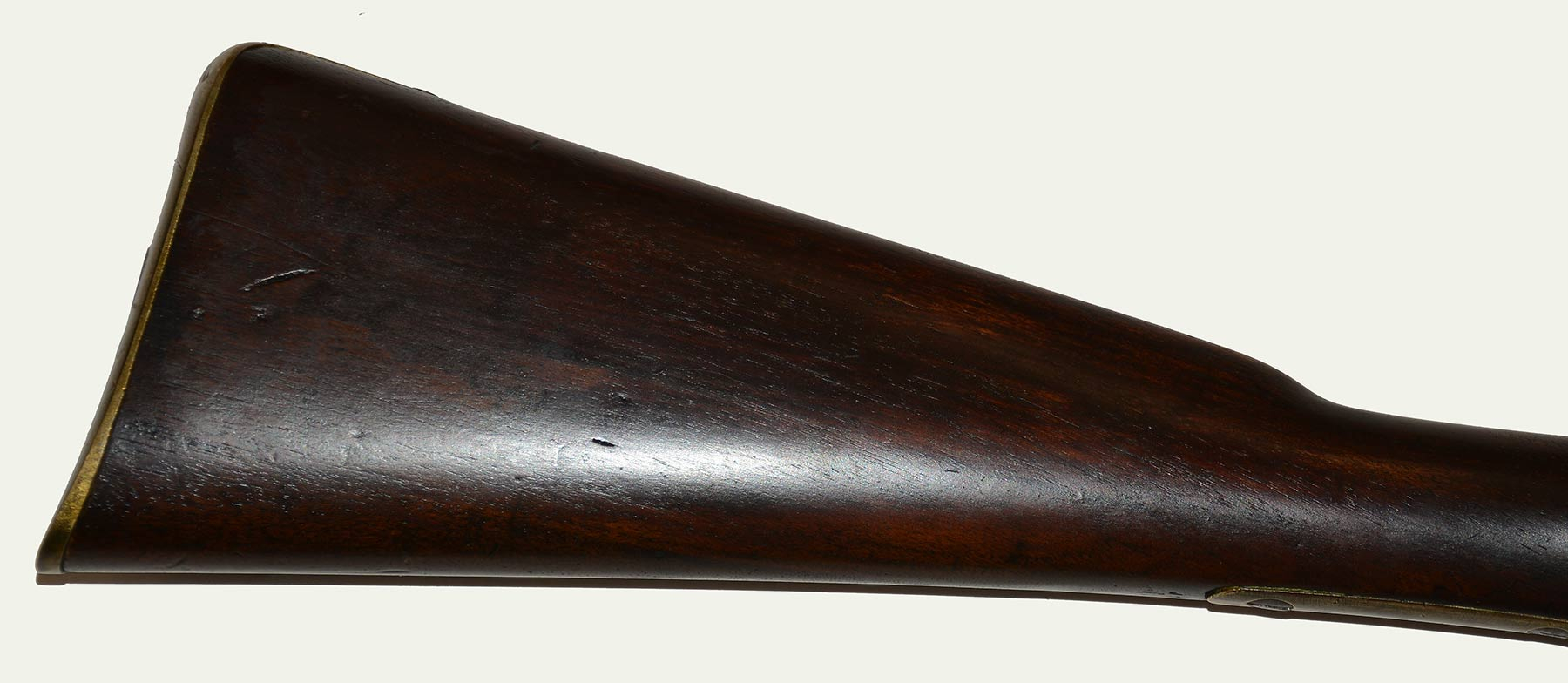


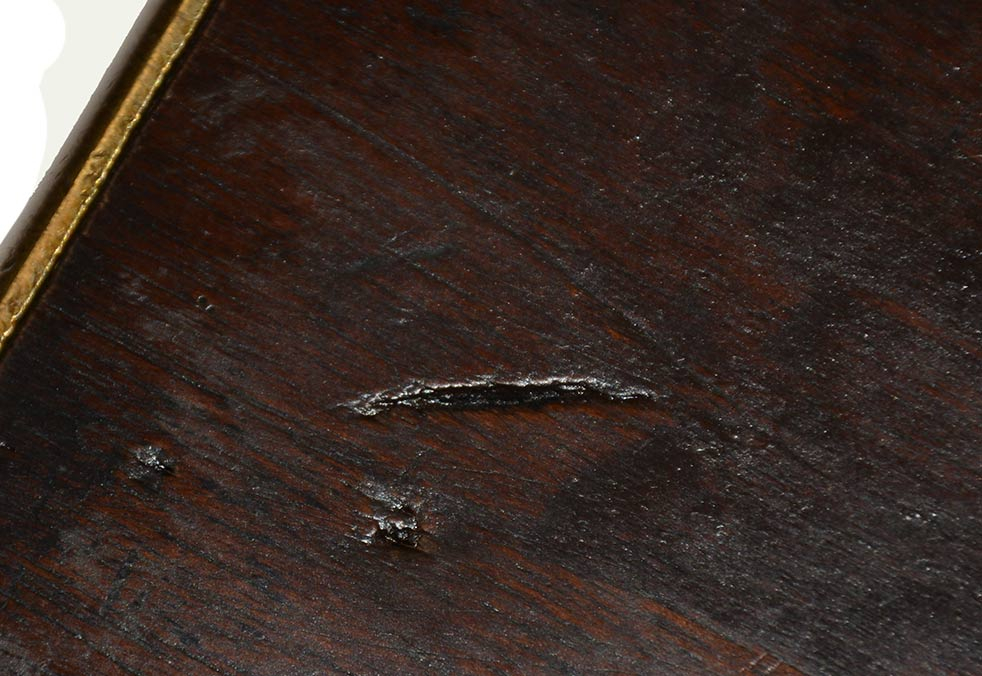
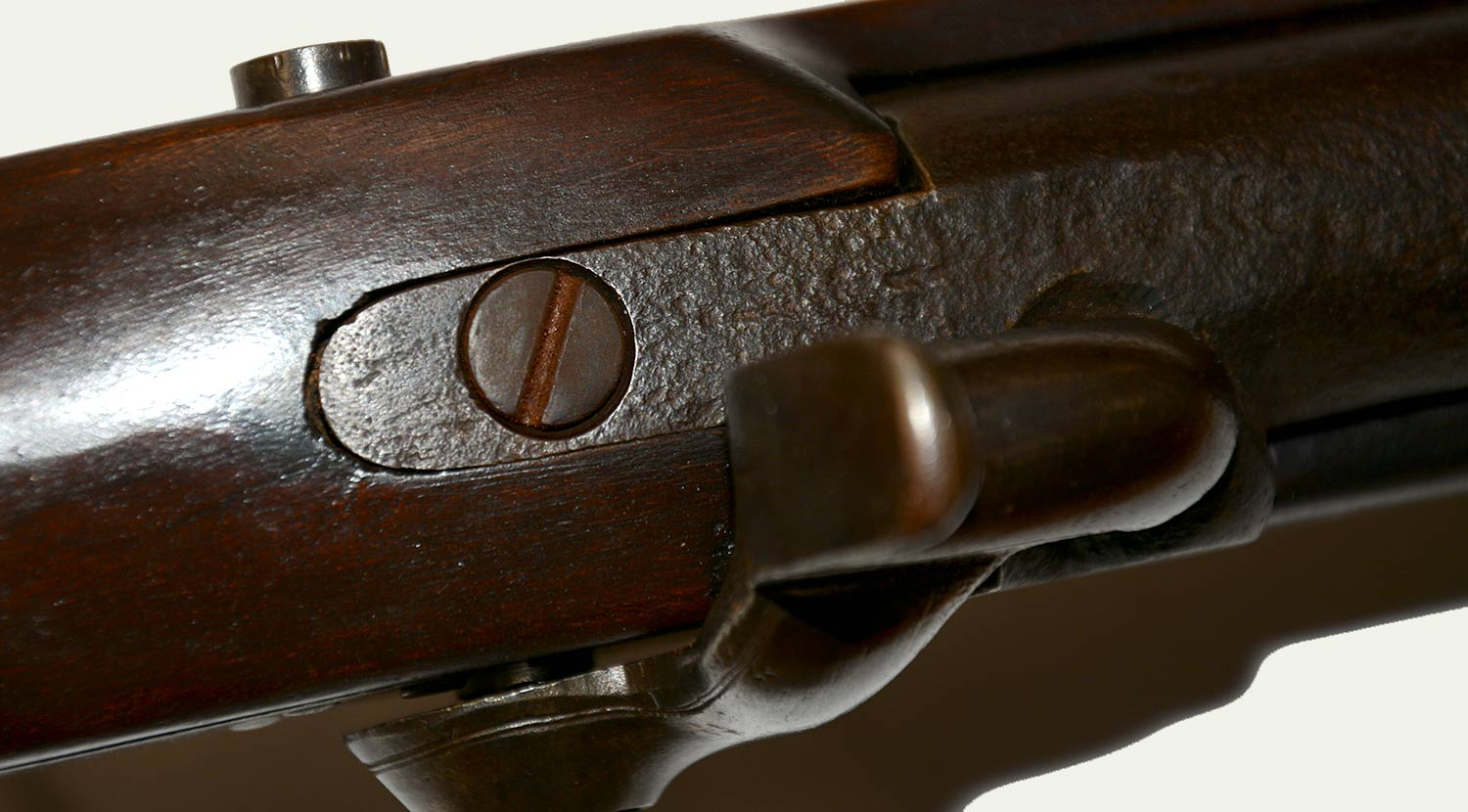

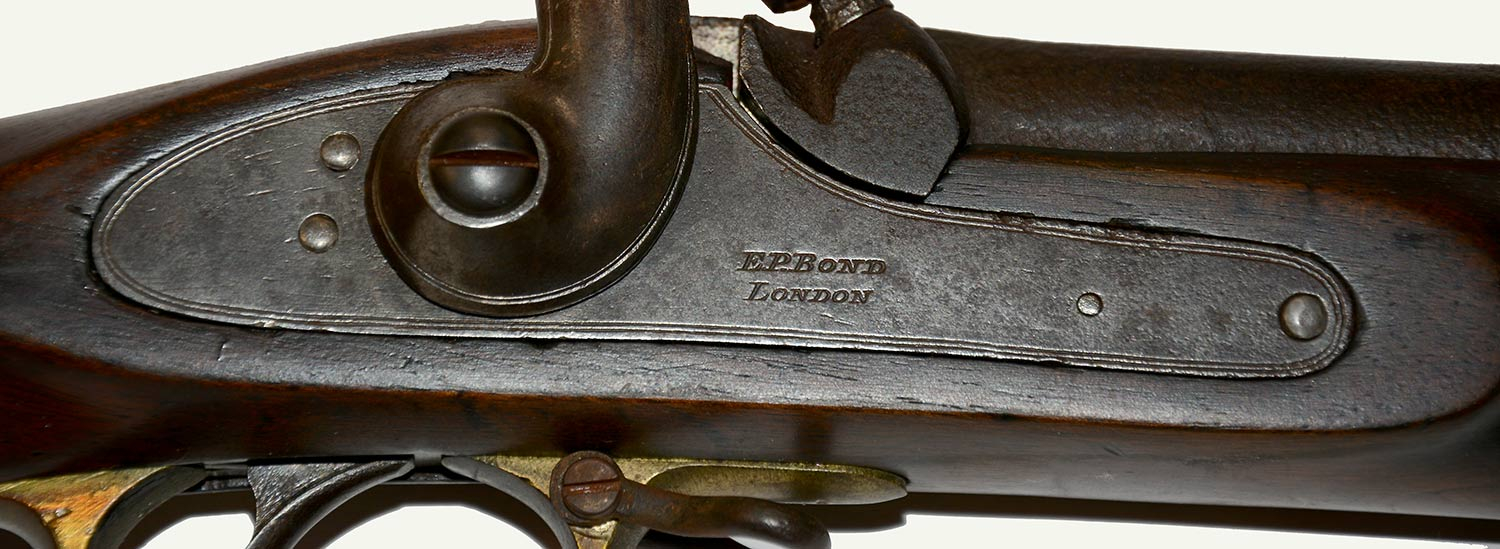
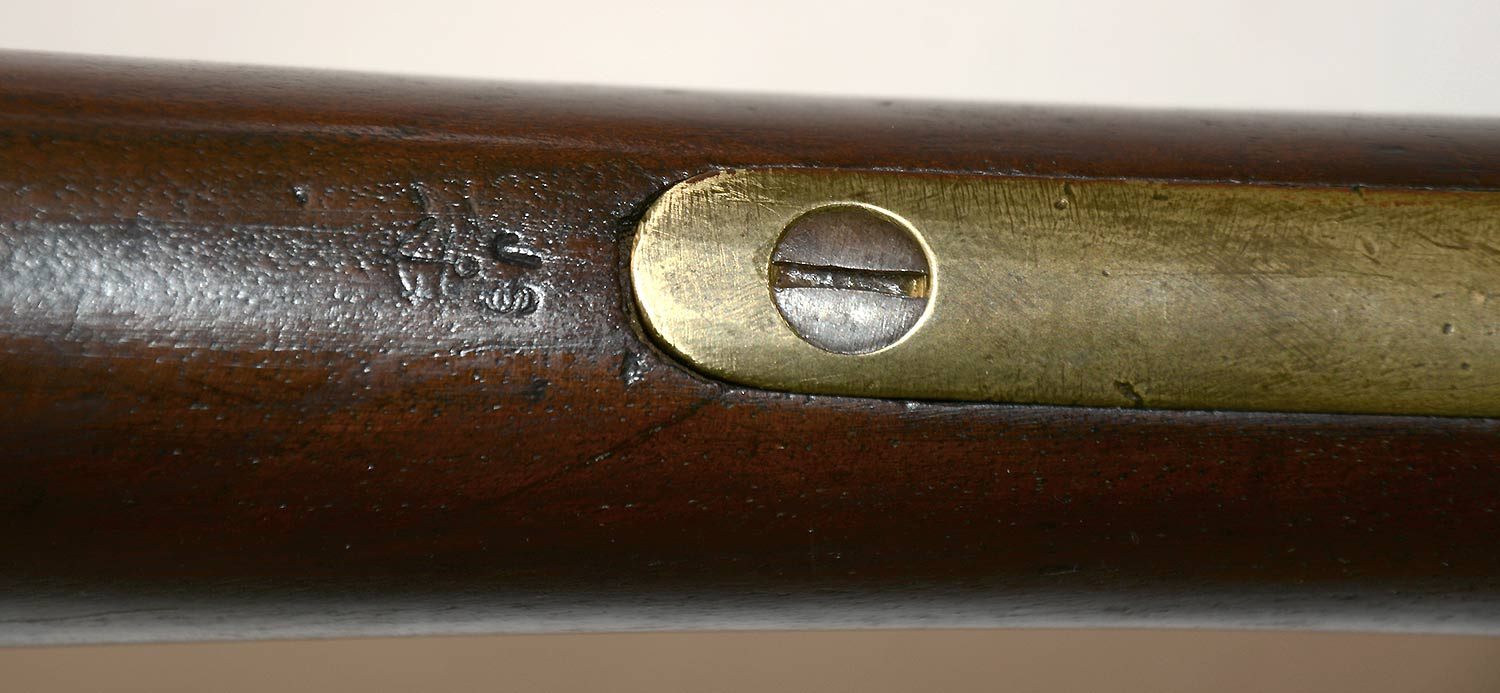
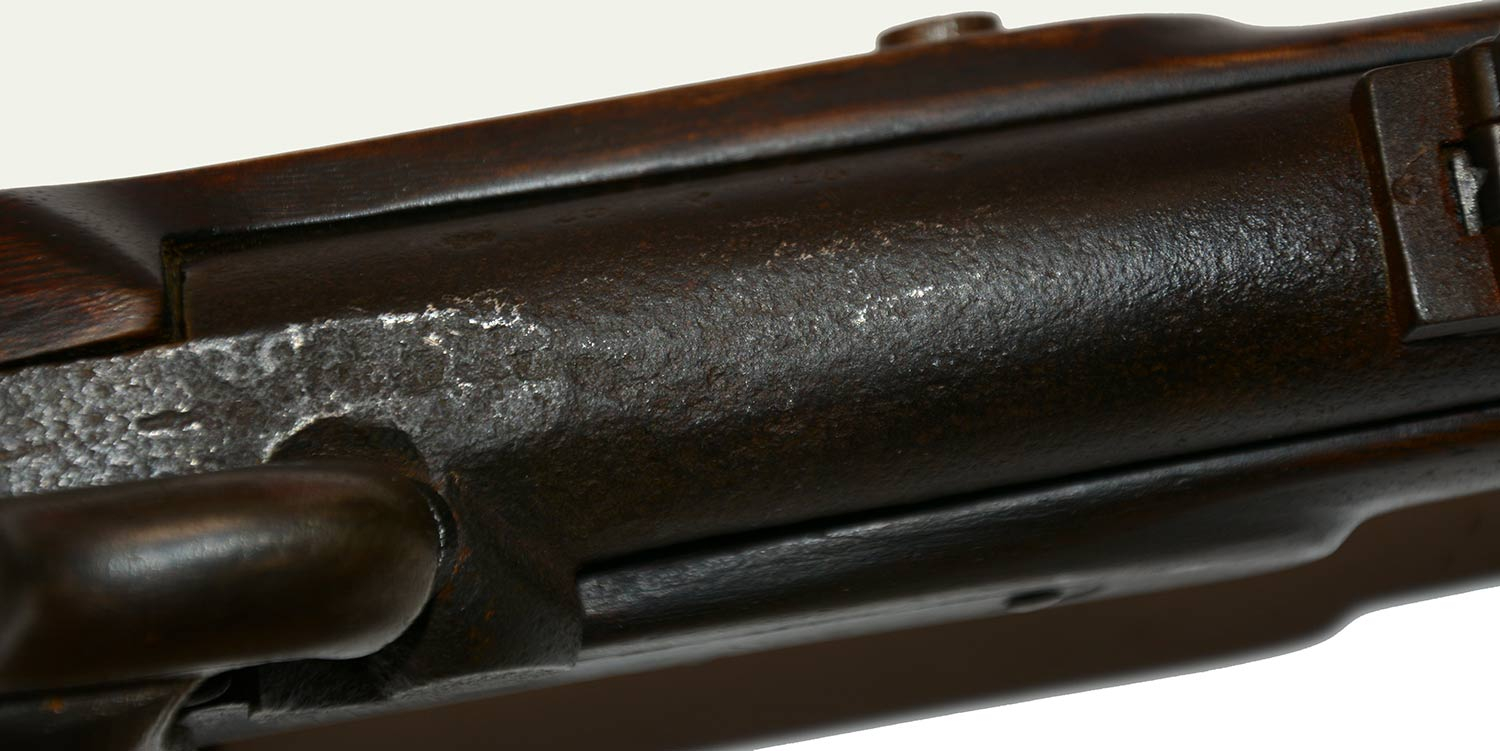
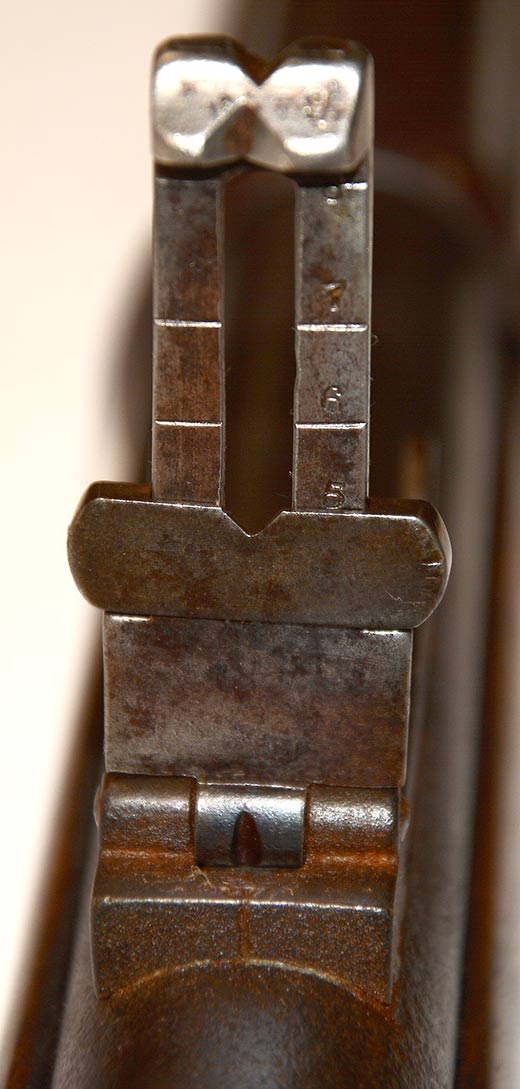
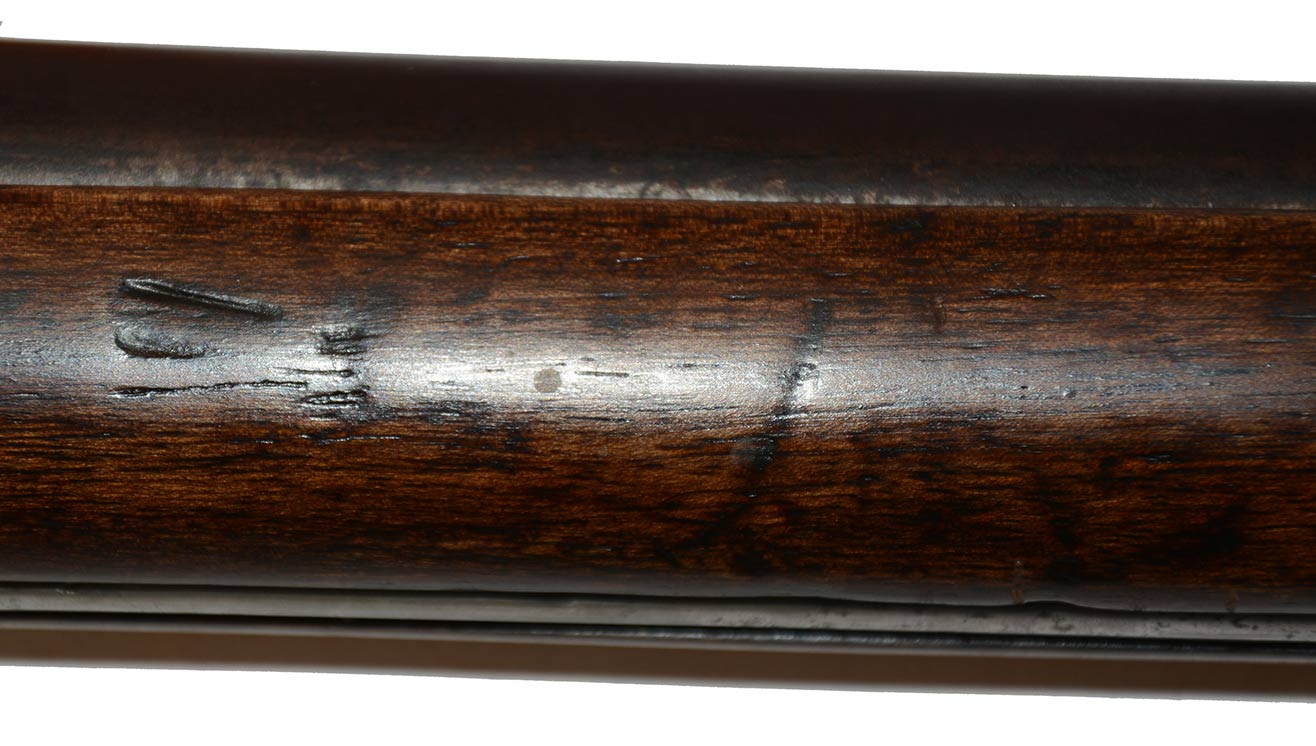

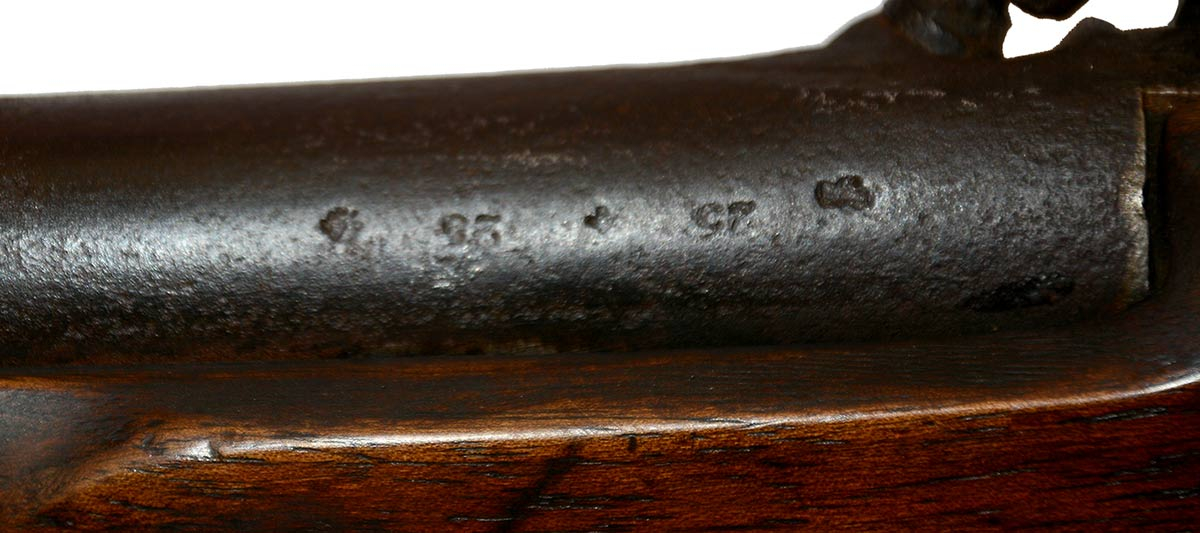
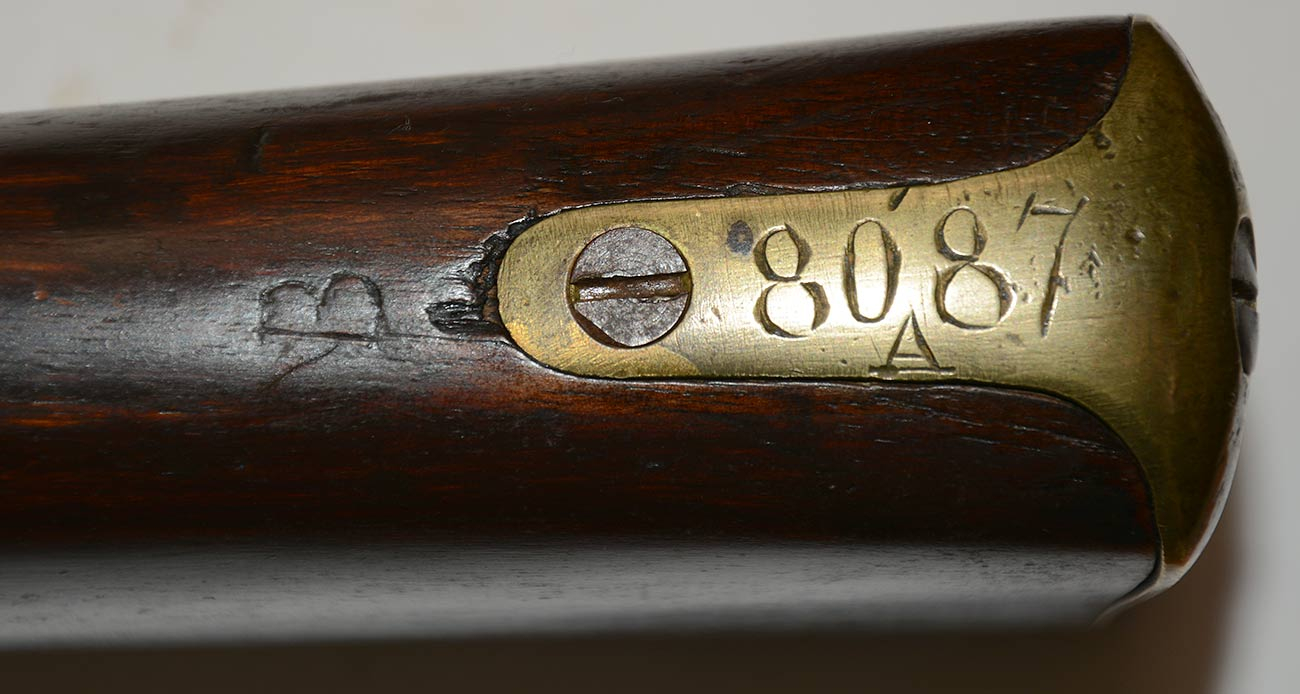

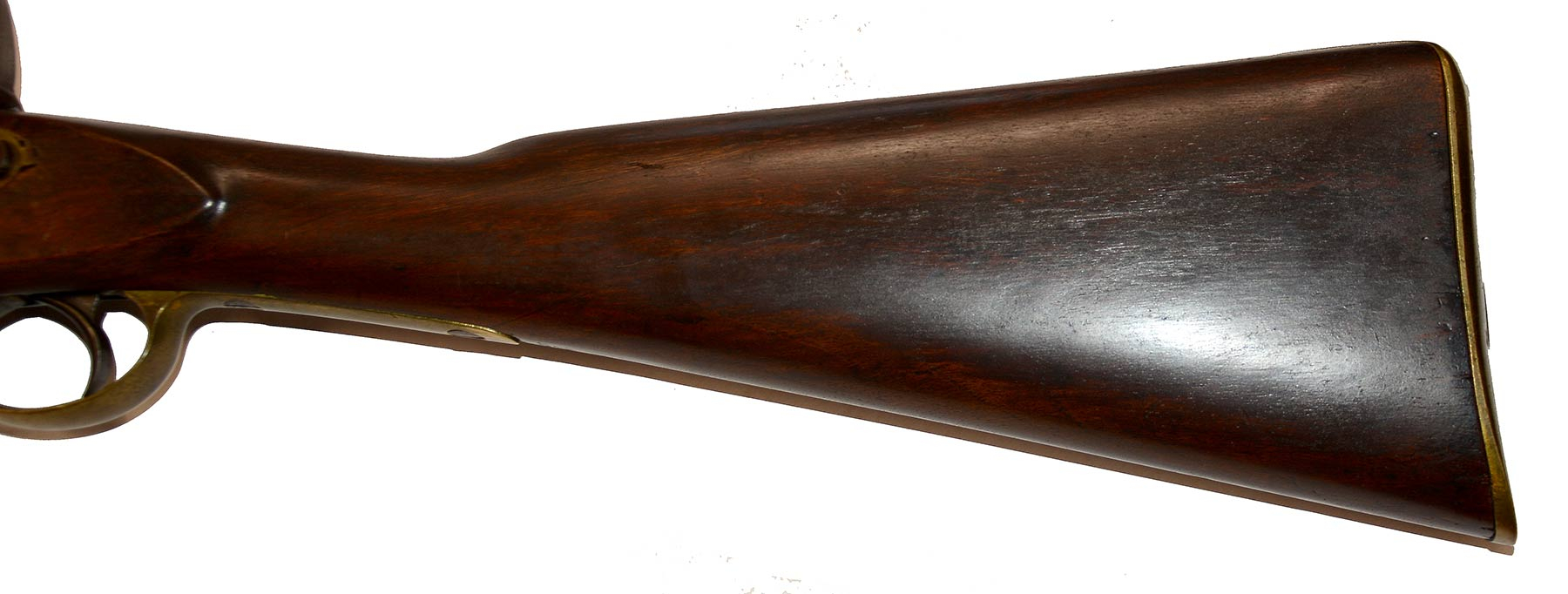
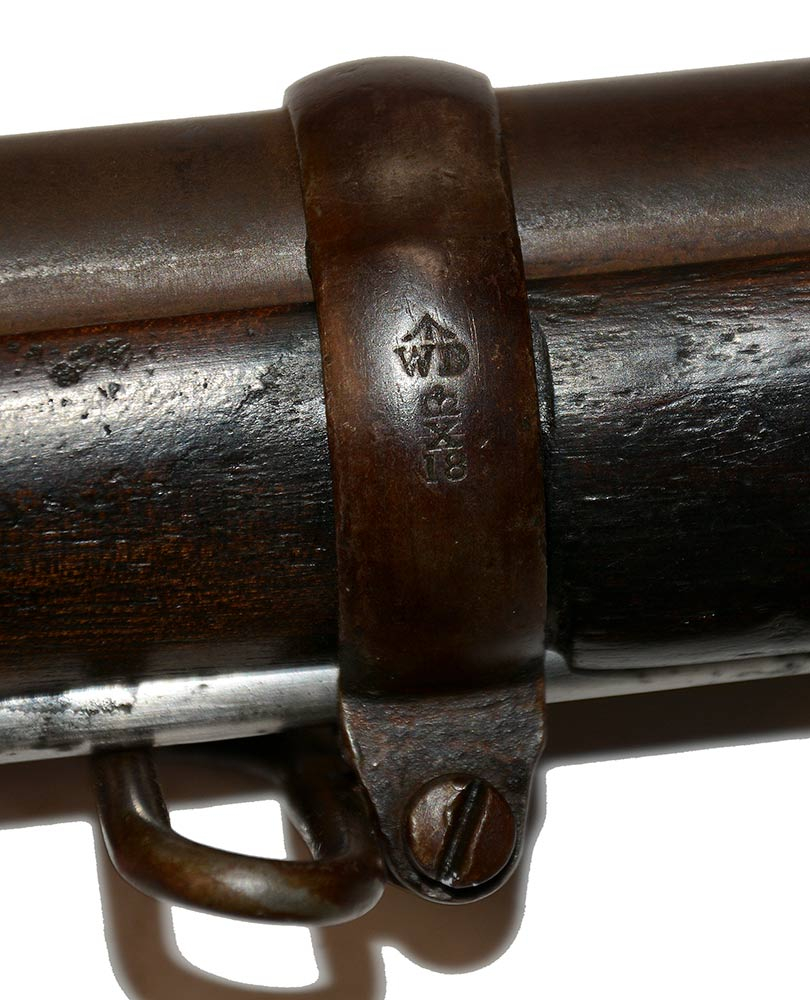

$4,250.00 SOLD
Quantity Available: None
Item Code: 2020-567
This is a classic example of the British P1853 Enfield rifle musket as imported by the Confederacy and showing all the bells and whistles: a control-number engraved buttplate tang, JS/anchor stamp, furnisher buttstock stamp (markings indicating it was imported in the first twelve or fourteen months of the war,) and just the right amount of pitting around the nipple to show it was used with the imported, corrosive British “high-pressure” percussion caps. Nevertheless, the rifle is in very good condition- and on the scale of Confederate arms, which usually show hard use, it probably rates higher. For information on Confederate imports and the marking system exhibited by this one, interested parties should consult the essential, “The British Connection” by Pritchard et al., and Knott’s “The Confederate Enfield.”
The lock is smooth metal with nice border lines on the hammer and lockplate. The latter is crisply stamped “E.P. BOND / LONDON,” for Edward Phillip Bond, a cutler and gunmaker whose brother, Eyton, was also in the business, though operating out of Birmingham. E.P. Bond was one of the five principal furnishers of arms to Georgia, South Carolina, and the central Confederate government, and his marking in this role appears as a large block letter “B” on the comb of the buttstock just forward of the buttplate tang. The buttplate tang is engraved 8087 / A, the letter indicating it is from the second lot of 10,000 guns. This is the position generally used for these numbers and as is generally the case the number is engraved (Barnett was an exception- stamping the number on the toe of the buttplate.) At least six different engravers applied these markings, which were dispensed with in the second quarter of 1862, and no “C” suffixed numbers are known. The engraving here seems to fall into the larger and somewhat cruder styles: see pages 96-97 of The English Connection for examples. In addition, the belly of the stock shows the desirable JS/[ANCHOR] mark. Knott, whose book on CS Enfields should also be on your shelf, has identified this as the stamp of John Southgate, a contract viewer for the London Armoury Company. Pritchard et al. are not entirely convinced of the personal identification, but are explicit in the mark’s validity as a Confederate diagnostic: “there is no doubt that the mark is that of an English viewer or viewers in the employ of Confederate authorities.”
The rifle is completely original, full length, and not messed with. The metal is generally smooth, with the iron showing a plum brown on the barrel, slightly lighter on the bands, the lock a mottled silver and gray, the hammer more silver, and the brass showing a medium, aged patina with some scattered small brown age spots. The breech next to the nipple and the breechplug tang show shallow pitting and the wood around the breech of the barrel shows some slight shrinkage gaps, both likely the effect of the powerful, imported British “high-pressure” percussion caps. These were introduced in April 1861 to ensure ignition of combustible cartridges by a more intense flame, so powerful as to draw complaints among the British volunteer forces and be withdrawn from general British issue in August 1864. The barrel provisional and definitive proofmarks show some effects from this, but are fully legible, including the two bore gauge marks of “25,” indicating .577 caliber.
Both sights are in place and the rear sight is complete. Bands and sling swivels are all present. The ramrod shows bright metal with dark brown and gray spots. It is correct, though likely a period replacement. We see no numbers on it. The wood has a very good surface and color, with a few very minor handling dings or small pressure dents. The lock apron and counterpane have good edges showing just light wear, and have tight fit to the metal. The ramrod channel shows appropriate wear for a rifle that has seen action, with the only significant wear or slight chipping being to the edges of the channel are between the nose cap and upper band, which is expected from a soldier hastily returning the rammer. The edges of the barrel channel show some rounding from handling, but no chips or missing slivers. Mechanics crisp and function well; bore is dirty, rifling visible.
The P53 Enfield was imported in large numbers by both sides in the war, but Confederate agents certainly got a head start in the matter. This is great, early-war, no-doubt-about-it, Confederate Enfield that would be a key piece in any Confederate or Civil War longarms display. [sr] [ph:L]
DISCLAIMER: All firearms are sold as collector's items only - we do not accept responsibility as to the shooting safety or reliability of any antique firearm. All firearms are described as accurately as possible, given the restraints of a catalog listing length. We want satisfied customers & often "under" describe the weapons. Any city or state regulations regarding owning antique firearms are the responsibility of the purchaser. All firearms are "mechanically perfect" unless noted, but again, are NOT warranted as safe to fire.
~~~~~~~~~~~~~~~~~~~~~~~~~~~~~~~~~~~
THIS ITEM, AS WITH ALL OTHER ITEMS AVAILABLE ON OUR WEB SITE,
MAY BE PURCHASED THROUGH OUR LAYAWAY PROGRAM.
FOR OUR POLICIES AND TERMS,
CLICK ON ‘CONTACT US’ AT THE TOP OF ANY PAGE ON THE SITE,
THEN ON ‘LAYAWAY POLICY’.
THANK YOU!
Inquire About VERY NICE EARLY WAR CONFEDERATE IMPORT NUMBERED P53 ENFIELD RIFLE MUSKET
Most Popular
Historical Firearms Stolen From The National Civil War Museum In Harrisburg, Pa »
Theft From Gravesite Of Gen. John Reynolds »
Selection Of Unframed Prints By Don Troiani »
Fine Condition Brass Infantry Bugle Insignia »
Large English Bowie Knife With Sheath 1870’S – 1880’S »
Imported (Clauberg) Us Model 1860 Light Cavalry Officer's Saber »
featured item
CONFEDERATE CAVALRY CAPTAIN’S FROCK COAT OF CAPT. EDWARD BIRD, “EFFINGHAM HUSSARS,” 2nd BATTALION AND 5th REGIMENT GEORGIA CAVALRY
This rare, identified, Confederate cavalry captain’s frock coat belonged to an officer who served from 1861 though 1865, rising from Captain to Colonel, with extensive action especially in Wheeler’s cavalry corps fighting against Sherman in the… (1179-232). Learn More »
site search
Upcoming Events
The shop is currently closed so that we may conduct our annual inventory. We are available by phone… Learn More »


